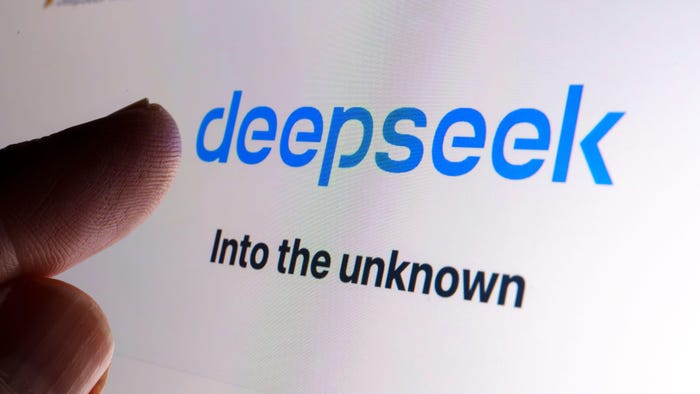Beyond the Hype: Unveiling the Realities of WormGPT in CybersecurityBeyond the Hype: Unveiling the Realities of WormGPT in Cybersecurity
Though WormGPT tools may not be a major problem now, organizations can't let their guard down.
_Jukka_Palm_Alamy.jpg?width=1280&auto=webp&quality=95&format=jpg&disable=upscale)
COMMENTARY
WormGPT — the Dark Web imitation of ChatGPT that quickly generates convincing phishing emails, malware, and malicious recommendations for hackers — is worming its way into consumer consciousness and anxieties.
Fortunately, many of these concerns can be allayed.
As someone who has investigated WormGPT's back-end functionalities, I can say that much of the discourse around this sinister tool has been exaggerated by a general misunderstanding of AI-based hacking applications.
Presently, WormGPT chatbot assistants are largely just uncensored GPT models with some prompt engineering — far less intimidating and sophisticated than they may be perceived. But that's not to say that these and other tools like them couldn't become much more threatening if left unaddressed.
Therefore, it's important for cybersecurity stakeholders to understand the differences between WormGPT's current capabilities and the foreseeable threats it could pose as it evolves.
Setting the Record Straight
A wave of inquiries from concerned customers sparked my investigation. Initial Google searches led me to a mix of online tools, paid services, and open source repositories, but the information about them was often fragmented and misleading.
Using several anonymity measures, I brought my research onto the Dark Web, where I discovered multiple variations of WormGPT across different Dark Web indexes, which provided a much clearer picture of their utility. Each of the services offers a sleek and engaging user interface embedded with pre-set interactions using OpenAI's API or another uncensored large language models (LLM) running on a paid server.
Their outward complexity, however, is simply an elaborate ruse. Upon closer inspection, I found that WormGPT tools lack robust back-end capabilities — meaning they are prone to crashing and exhibit high latency issues during peak user demand. At their core, these tools are merely sophisticated interfaces for basic AI interactions, not black-hat juggernauts, as they're being touted.
The Potential Risks Ahead
That said, incremental advances in generative AI (GenAI) technologies are signaling a future where AI could independently manage complex tasks on behalf of bad actors.
It is no longer far-fetched to envision sophisticated autonomous agents that can execute cyberattacks with minimal human oversight: AI programs capable of leveraging "chain of thought" processes to enhance their real-time agility when performing cybercrime tasks.
Cyberattack automation is well within the realm of possibility, due to the availability of advanced GenAI models. During my research into WormGPT-like tools, for instance, I discovered that one could easily operationalize an uncensored model on freely available code sharing platforms like Google Colab.
This accessibility suggests that even individuals with minimal technical expertise would be able to craft and launch sophisticated attacks anonymously. And with GenAI agents growing more adept at mimicking legitimate user mannerisms, standard security measures such as conventional regular expression-based filtering and metadata analysis are becoming less effective at detecting the telltale syntax of AI-borne cyber threats.
Hypothetical Attack Scenario
Consider one scenario that illustrates how these AI-driven mechanisms could navigate through various stages of an advanced cyberattack autonomously at the behest of an amateur hacker.
First, the AI could conduct reconnaissance, scraping publicly available data about target companies from search engines, social media, and other open sources, or by utilizing the knowledge already embedded within the LLM. From there, it could venture into the Dark Web to gather additional ammunition such as sensitive information, leaked email threads, or other compromised user data.
Leveraging this information, the AI application could then begin the infiltration phase, launching phishing campaigns against known company email addresses, scanning for vulnerable servers or open network ports and attempting to breach the entry points.
Armed with the information it gathers, the AI tool could initiate business email compromise (BEC) campaigns, distribute ransomware, or steal sensitive data with complete autonomy. Throughout this exploitation process, it might continuously refine its social engineering methods, develop new hacking tools, and adapt to countermeasures.
Using a retrieval-augmented generation (RAG) system, the AI tool could then update its strategies according to the data it has collected and report back to the attack's orchestrator in real-time. Moreover, RAG enables the AI to keep track of conversations with various entities, allowing agents to create databases to store sensitive information and manage multiple attack fronts simultaneously, operating like an entire department of attackers.
Raise the Shield
The capabilities to make WormGPT into a more ominous tool aren't far away, and companies may want to prepare viable AI-empowered mitigation strategies in advance.
For example, organizations can invest in developing AI-driven defensive measures designed to predict and neutralize incoming attacks ahead of time. They can enhance the accuracy of real-time anomaly detection systems and work to improve cybersecurity literacy across every organizational level. A team of expert incident response analysts will also prove to be even more essential going forward.
Though WormGPT tools may not be a major problem now, organizations must not let their guard down. AI-driven threats of this caliber demand a swift, immediate response.
As they say, the early bird gets the worm.
About the Author
You May Also Like
Uncovering Threats to Your Mainframe & How to Keep Host Access Secure
Feb 13, 2025Securing the Remote Workforce
Feb 20, 2025Emerging Technologies and Their Impact on CISO Strategies
Feb 25, 2025How CISOs Navigate the Regulatory and Compliance Maze
Feb 26, 2025Where Does Outsourcing Make Sense for Your Organization?
Feb 27, 2025


_Brain_light_Alamy.jpg?width=700&auto=webp&quality=80&disable=upscale)

